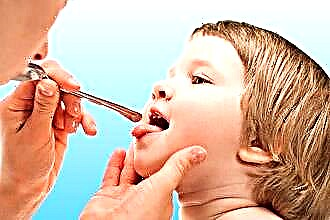A teenager can periodically bleed from his nose for a variety of reasons. Most often, the violation is associated with hormonal disruption, because during puberty there is a restructuring of many systems, including the endocrine system. However, there are other, more serious diseases that are manifested by periodic epistaxis (nosebleeds). It is important that the parents pay attention to this condition in time and go with the child to the doctor for a full examination.
Anatomical features
 The nose of a teenager is a part of the face that is very vulnerable to mechanical, thermal and chemical damage. It contains a large number of vessels and capillaries, especially in the lower anterior section (Kisselbach's plexus). Through the circulatory system, the mucous membrane receives the nutrients necessary for the production of secretions. However, due to the fact that the capillary plexus is located too close in the surface, it often lends itself to injury.
The nose of a teenager is a part of the face that is very vulnerable to mechanical, thermal and chemical damage. It contains a large number of vessels and capillaries, especially in the lower anterior section (Kisselbach's plexus). Through the circulatory system, the mucous membrane receives the nutrients necessary for the production of secretions. However, due to the fact that the capillary plexus is located too close in the surface, it often lends itself to injury.
Various reasons can cause nosebleeds in a teenager, ranging from a common cold with a runny nose to serious systemic diseases. It is imperative to undergo an examination with an otolaryngologist and other specialists in order to prevent negative consequences and eliminate the disease that provoked the violation in time.
Children experience epistaxis for a variety of reasons, which fall into 3 main types:
- general;
- local;
- disease.
Let us consider in more detail each type of reason in order to understand why the blood is flowing, and how it is dangerous for the health and life of the child.
Local
If blood flows from the nose due to the occurrence of any violations in the organ itself, then we can say that these are local causes. A child may experience this condition in such cases:
- Acute or chronic inflammatory diseases. This category includes rhinitis, flu and other infectious disorders that the teenager has suffered earlier or is currently suffering. Epistaxis can also be caused by allergies. The cause of the violation lies in the exhaustion and damage of the nasal mucosa, due to constant irritation, it cannot fully protect the choroid plexus from injury. One wrong movement in the morning toilet or blowing your nose can lead to bleeding.
 Mechanical trauma to the nose. Bruises, bumps and other injuries that provoked epistaxis once can lead to its relapse. When the integrity of blood vessels and capillaries is disturbed, blood can flow periodically.
Mechanical trauma to the nose. Bruises, bumps and other injuries that provoked epistaxis once can lead to its relapse. When the integrity of blood vessels and capillaries is disturbed, blood can flow periodically.- Neoplasms in the nasal cavity and paranasal sinuses. Benign neoplasms such as polyps, cysts of the paranasal sinuses, synechiae can lead to depletion of the mucosa and increased fragility of blood vessels. It is also common to bleed from the nose in the presence of cancerous tumors.
- Weak and fragile vessels in the nose. The general weakness of the blood vessels leads to the fact that epistaxis appears from time to time. Most often, relapses occur precisely in adolescence, since at this time the body receives a high load due to the restructuring of the hormonal system.
Common Causes
This is a number of factors that are associated with the general condition of the child, his health in general. The appearance of periodic bleeding can be influenced by various processes, which we will study in more detail.
- Hormonal surge. During puberty, there is a global restructuring of the hormonal system. The capillaries narrow, and the arterial and intracranial pressure increases, which causes epistaxis. Weak vascular plexuses cannot withstand pressure and burst.
 The formation of the menstrual cycle. Girls in adolescence begin their periods, but initially they do not go regularly. During the period when the formation of the menstrual cycle occurs, blood begins to rush to the genitals and the head, pressure rises, therefore nosebleeds occur during menstruation.
The formation of the menstrual cycle. Girls in adolescence begin their periods, but initially they do not go regularly. During the period when the formation of the menstrual cycle occurs, blood begins to rush to the genitals and the head, pressure rises, therefore nosebleeds occur during menstruation.- Psycho-emotional stress. Teenagers react very sharply to any events in their lives, which often causes them mental and emotional stress. Excessive physical activity can also provoke bleeding, it affects blood and intracranial pressure.
- Sharp changes in blood and intracranial pressure. Hormonal changes affect almost all organs and organ systems, it causes a sharp increase in arterial and intracranial pressure. Since the nasal vessels and capillaries are the thinnest and most fragile, the body tries to reduce the pressure by breaking them and releasing "excess" blood outside. This is a kind of defensive reaction, but if the condition is observed quite often, accompanied by dizziness and fainting, you need to be examined by an ENT specialist and an endocrinologist.
- Heat and sunstroke. When receiving solar or heatstroke, a sharp increase in pressure occurs, which causes epistaxis. Together with him, the patient shows signs such as chills, facial flushing, fainting, a decrease or increase in body temperature.
This is the most dangerous series of causes that manifest themselves with nosebleeds in adolescence. Parents should be especially careful about the health of their child and take him to examinations in order to start treatment for ailments on time.
Diseases
Consider what diseases provoke epistaxis and signal through it about their presence.
- Hemophilia. An inherited disease that is passed from mother to son or father to daughter. It negatively affects blood clotting and causes increased fragility of blood vessels and capillaries. Most of all, males are predisposed to the appearance of this ailment.
 Coagulopathy. A condition that occurs when there is a lack or poor functioning of platelets. These blood bodies are responsible for blood coagulation, when they are deficient, it is disturbed, which leads to frequent epistaxis. This process is triggered by oncological diseases, liver pathologies, and the uncontrolled use of drugs.
Coagulopathy. A condition that occurs when there is a lack or poor functioning of platelets. These blood bodies are responsible for blood coagulation, when they are deficient, it is disturbed, which leads to frequent epistaxis. This process is triggered by oncological diseases, liver pathologies, and the uncontrolled use of drugs.- Leukemia. This disease is also called leukemia, it is oncogenic. Affects the hematopoietic system, "settling" cancer tumors in it. The disease is quite difficult to treat, most often it leads to death, since it is difficult to diagnose in the early stages.
- Pheochromocytoma. It is a benign tumor that is located in the adrenal gland. The neoplasm triggers the release of hormones that are responsible for stress. When a child is constantly in a nervous strain, his pressure rises, which leads to epistaxis.
- Vegetovascular dystonia. A disturbance in the work of the autonomic nervous system can also cause nosebleeds, since this system regulates the work of blood vessels. and now I invite you to visit the site where girls with big tits show themselves on camera and make love. Increased fragility and fragility of capillaries leads to their rupture even with a slight increase in pressure or mechanical injury.
Features of the choice of treatment
Since various diseases can cause nosebleeds, a doctor's consultation is necessary. In the clinic, the patient is prescribed instrumental, hardware and laboratory examinations, anamnesis is taken. After the provocateur of the violation has been identified, the most effective therapy is selected. It may include the following measures:
- surgical intervention if you need to remove the growths in the nose;
- moxibustion of blood vessels;
- strengthening the walls of blood vessels with special drugs;
- immunostimulating procedures;
- fortification of the body (taking supplements with vitamins A, E, C and P);
- the use of folk remedies to prevent recurrence of bleeding.
Let's summarize
During adolescence, nosebleeds are a fairly common problem. If it is not associated with any serious diseases, then after puberty it completely disappears.
However, in no case should this violation be ignored and wait for it to recede. Consultation with a doctor is necessary during epistaxis in order to exclude the presence of serious systemic diseases and oncology.
Take care of your children and seek medical help in time.

 Mechanical trauma to the nose. Bruises, bumps and other injuries that provoked epistaxis once can lead to its relapse. When the integrity of blood vessels and capillaries is disturbed, blood can flow periodically.
Mechanical trauma to the nose. Bruises, bumps and other injuries that provoked epistaxis once can lead to its relapse. When the integrity of blood vessels and capillaries is disturbed, blood can flow periodically. The formation of the menstrual cycle. Girls in adolescence begin their periods, but initially they do not go regularly. During the period when the formation of the menstrual cycle occurs, blood begins to rush to the genitals and the head, pressure rises, therefore nosebleeds occur during menstruation.
The formation of the menstrual cycle. Girls in adolescence begin their periods, but initially they do not go regularly. During the period when the formation of the menstrual cycle occurs, blood begins to rush to the genitals and the head, pressure rises, therefore nosebleeds occur during menstruation. Coagulopathy. A condition that occurs when there is a lack or poor functioning of platelets. These blood bodies are responsible for blood coagulation, when they are deficient, it is disturbed, which leads to frequent epistaxis. This process is triggered by oncological diseases, liver pathologies, and the uncontrolled use of drugs.
Coagulopathy. A condition that occurs when there is a lack or poor functioning of platelets. These blood bodies are responsible for blood coagulation, when they are deficient, it is disturbed, which leads to frequent epistaxis. This process is triggered by oncological diseases, liver pathologies, and the uncontrolled use of drugs.

